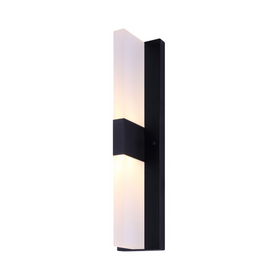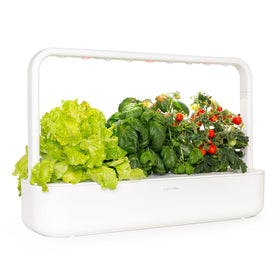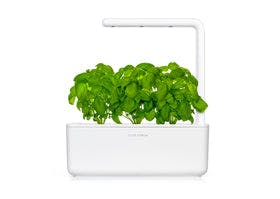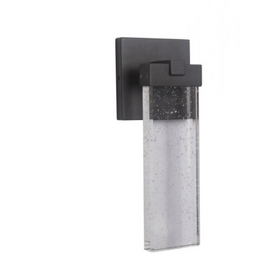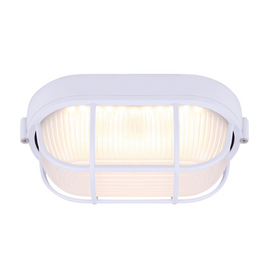
2021's Best Indoor Gardening Systems
Last Updated: Apr 9, 2025Are you as excited as we are when gardening season is here? Every spring, we look at the last snow piles melting from our lawns, and we're just itching with excitement to get our gardening projects underway!
If you don't share that enthusiasm, maybe you've thought of doing some indoor gardening but aren't sure how to go about doing it, or perhaps you don't have space or time for it. We are here to help!
There are more benefits to indoor gardening than you might think. Sure, you'll enjoy year-round fresh herbs or vegetables, but you can also save a lot on grocery costs. Most importantly, indoor plans can significantly improve health by reducing stress and improving indoor air quality. Low maintenance indoor gardening systems allow you to grow plants 365 days a year, even with a busy schedule.
The indoor gardening craze is on right now. Some great products are hitting the shelves that make indoor gardening incredibly easy. We believe that everyone deserves to experience the benefits of gardening. As such, we brought together our top picks for indoor gardening solutions that are as newbie-proof as can be. These picks utilize either hydroponic or aquaponic growing systems that you can purchase online. These options range in size and price, so we recommend choosing which indoor gardening kits will work best for your lifestyle.
Table of Contents
- What are the Best Indoor Gardening Systems?
- Click and Grow
- The Water Garden 2.0
- AeroGarden
- Hydrofarm Hydroponic MegaGarden System
- Smart Farm by Mr. Stacky
- SuperPonics 8 Hydroponic Grow System
- Tower Garden
- Nutritower
- The Future of Vertical Gardening
What are the Best Indoor Gardening Systems?
We've narrowed down the great options for indoor gardening systems at home this year. The best we've found are:
- Click and Grow
- The Water Garden 2.0
- AeroGarden
- Hydrofarm Hydroponic MegaGarden System
- Smart Farm by Mr. Stacky
- SuperPonics 8 Hydroponic Grow System
- Tower Garden
- Nutritower

Click and Grow
This beautifully designed small tabletop garden from Click and Grow starts at $99. It is automated via sensors to ensure enough water, sunlight, and nutrients are getting to the plants. Their most popular plant pods consist of mini tomatoes, wild strawberries, and herbs like lavender, rosemary, and peppermint. Click and Grow's 'Smart Soil' is inspired by NASA technology and helps keep the water evenly distributed while ensuring the proper PH level for your plants. Reviewers of this product line seem to be very impressed with the ease of use and the speed of growth!

Smart Farm by Mr. Stacky
The Smart Farm starts at $250 and is a vertical hydroponic tower garden system. It packs 20 plants in a 19" by 19" footprint, including a 16-gallon water reservoir. The Smart Farm recommends using 75 percent coco peat and 25 percent perlite for optimal growing. You can connect multiple Smart Farm towers if you want a more extensive system.

SuperPonics 8 Hydroponic Grow System
The SuperPonics 8 Hydroponic Grow System costs $325 and is a small automated tabletop system at an affordable price with room for eight plants and utilizes top feed watering and bottom feed oxygenation.
Tower Garden
At about 5 feet tall, the Tower Garden kit costs about $750, holds up to 20 plants, and can extend to 28 plants with added extensions. Taking up just three square feet, this is an excellent option for those wanting a substantial garden in a small indoor space. The Tower Garden uses aeroponics to grow plants with just water versus dirt. It offers a comprehensive variety of seed pods. On average, it yields 30 percent more plants than traditional gardening with 90 percent less water. While it is on the higher end in terms of cost, it can produce a substantial amount of fresh microgreens, vegetables, fruits, and herbs.
The Future of Vertical Gardening
The vertical gardening industry (both indoor and outdoor) has been gaining popularity in recent years. In fact, IKEA just announced that they are broadening their business model to include vertical farming at their retail location for visitors to enjoy. They want to impact sustainability through food, and many of their retail locations have restaurants. Perhaps with a retail giant like IKEA showcasing the value of vertical gardening, it may show homeowners how beneficial it can be.
Indoor gardening requires no pesticides, can use 90% less water than conventional gardening, and requires less valuable land. The 2018 National Gardening Survey found that about 30% of households have bought houseplants, showing an upward trend towards incorporating greenery into indoor spaces. We look forward to seeing how the vertical gardening industry changes in the future!
Maria Saxton
Located in Roanoke, Virginia, Maria Saxton holds a Ph.D. in Environmental Design and Planning from Virginia Tech. She works as an Environmental Planner and Housing Researcher for a local firm specializing in Community Planning, Architecture, Landscape Architecture, and Historic Preservation. Her dissertation explored the environmental impacts of small-scale homes. She serves as a volunteer board member for the Tiny Home Industry Association.









